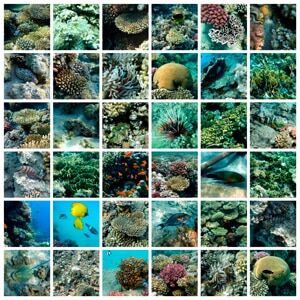 The economy of Australia to a certain extent depends on the marine products. Fishing is the main occupation since Australia has an extensive coastal line. It forms one of the major fishing sectors of the world. The recent studies have shown that the productivity of this fishing zone is drastically decreasing. The scientists attribute this situation to an increase in temperature, changes in the ocean current, acidification of the ocean and changes in rainfall and winds. These changes are caused by change in climate due to pollution and global warming.
The economy of Australia to a certain extent depends on the marine products. Fishing is the main occupation since Australia has an extensive coastal line. It forms one of the major fishing sectors of the world. The recent studies have shown that the productivity of this fishing zone is drastically decreasing. The scientists attribute this situation to an increase in temperature, changes in the ocean current, acidification of the ocean and changes in rainfall and winds. These changes are caused by change in climate due to pollution and global warming.
The impact
The impact caused by changes in climate and temperature on marine ecosystem are:
- Changes in the distribution of species. Animals start to move in the southward direction to avoid increasing temperature.
- The timing of the various events in the life cycle of an animal gets changed. This result in delayed hatching of eggs, changes in the time of migration of fishes, changes in the blooming time of algae etc.
- The physiology of animals will be changed due to increase in temperature. The animals will show increased rate of metabolism, reduced reproductive and respiratory rates.
- The marine animals with calcareous outer shell are at risk due to increased temperature, as calcification requires longer time.
Changes in ocean currents
The changes in the circulation of the ocean currents in Pacific Ocean and Tasman Sea are causing the modification of these marine environments and ecosystems. It is expected that the temperate fisheries region of Australia will be more affected by the changes in currents and temperature than the tropical areas.
Effect on fisheries
Scientists expect that by the year 2070 the increase in average temperature of the country will have a devastating effect on Australian fisheries and the economy of the country. The West Australian fisheries will be the most affected, followed by Victorian and Tasmanian fisheries industries. The near shore ecosystems are also affected by the increased rainfall, turbidity of the water, inflow of nutrients from land, reduced light penetration and erosion of coastal land.
It has been found that three marine groups are especially affected by climatic change in the Australian marine eco system, they are:
- Phytoplankton
- Tropical corals
- Marine turtles
Phytoplankton
Phytoplanktons are different species of microscopic plants inhabiting the light penetrating levels of ocean. They form the main food source for whales, fishes, prawns and other filter feeding animals found in the zone. They play an important role in the carbon and oxygen cycles. Any reduction in the Phytoplankton levels will cause food scarcity for the marine animals.
Tropical corals
The coral reefs in Australia provide excellent habitat for marine flora and fauna. It has been found that more than 400 species of corals make the reefs their home. There are thousands of species of molluscs and fishes depending on these coral reefs. Any disturbance to these reefs in the form of high temperature or chemical contents will adversely affect the coral reef ecosystem.
Marine turtles
This is just one group most widely affected by the changes in temperature. the gender of the embryos is determined by environmental temperature: high temperature promote the development and growth of females and increasing high temperatures will mean a significant reduction in male populations which will in turn affect breeding and the reproductive lifew cycle of these creatures. So, to keep the eco systems intact, effective ways should be found to protect these and other species from danger and harm.
One significant way to protect our marine environment is by changing our washing and cleaning habits. You can make a significant personal impact by sourcing eco-friendly products for your cleaning and your industrial uses. Envirosafe Solutions produces quality products that have less harmful impact on the environment. Telephone 1300 889070 for more information.
Sources:



















